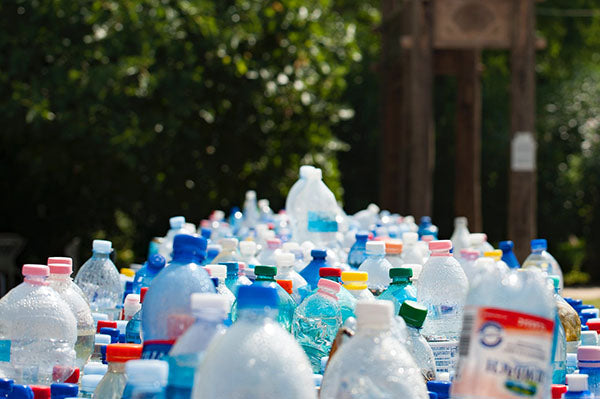What Are the Benefits Of Recycled Plastic Benches
Article published on Jun 06, 2020
Here in America, we throw out a staggering 35 billion plastic bottles every year and plastic like this makes up more than 19% of our landfills. This reality is all the more sobering when we consider that it takes 450 years for a plastic bottle to decompose, and 1,000 years for other solid plastics.
From a waste management standpoint, this long decomposition time is a big problem, filling up landfills. But what if that longevity and durability could be put to use?
Fortunately, thin plastics like milk jugs and plastic bottles can be recycled fairly efficiently, and even transformed into planks of material more long-lasting and durable than the wooden planks they serve to imitate and replace. This not only helps create useful products out of otherwise wasted materials but, it does so with amazing space efficiency with 3,400 milk jugs packed into one single 6 foot park bench.

How are milk jugs turned into park benches?
The process for transforming 3,400 plastic milk jugs into a park bench is impressive but simple.
Type 2 plastic is separated.
First, the plastics are separated by plastic types. Milk Jugs are most often made from high-density polyethylene which is labeled type “2”. This material has a particularly high strength to density ratio, making it a great choice for heavy-use outdoor furnishing like park benches and picnic tables.
Jugs are transformed into flakes.
Next, the jugs are flattened and sent into a shredder where they’re chopped into small flakes. These flakes are then rinsed and cleaned.
Flakes are melted into molds.
Depending on the desired outcome, these flakes are then mixed with other colored recycled plastics to make the finished product best resemble an ordinary plank of wood. Together, these plastics are melted and put into molds where they take the shape of an ordinary plank of wood.
Planks are dried.
Finally, they’re dried on frames to prevent warping. The entire process can be viewed in this short Youtube video by Quest TV.
What are the benefits of recycled plastic?
Recycled plastic benches are durable.
As mentioned before, the same properties that make this plastic hard to decompose in a landfill also make it incredibly durable in use in parks, patios, and other outdoor spaces. An ordinary wooden park bench will begin to rot, lasting only about 50 years at most, but often less than that. Recycled plastic benches are prepared to last a lifetime with sturdy planks that won’t rot or decay.
Recycled plastic benches don’t require painting or staining.
Secondly, the recycled plastic planks are colored as they’re created making them immediately ready for use without the need for painting or staining. With many recycling processes also including UV treatment so the colors won’t significantly fade even with daily exposure to the sun. A recycled plastic bench will not need painted and in fact since paint does not bond to the surface, it can’t really be painted… which brings us to the next point.
Recycled plastic benches are less vulnerable to vandalization.
Recycled plastic lumber is much harder to vandalize than ordinary wood. As mentioned above, paint doesn’t truly bond to the surface, so it can be easily removed with a scraper or sandpaper. Similarly, marker marks can be washed off with simple household cleaning products.
Recycled plastic benches can be much cheaper.
Obviously a bench that lasts 400 years and is difficult to vandalize will save money in replacement costs, but even without factoring in these savings, recycled plastic benches have become extremely affordable. This is in part because the mold-process makes production very simple.
Our collection for example includes park benches under $200, which easily competes with the price or traditional wooden park benches.
To browse our full recycled plastic park bench collection, click here.


 Barricades
Barricades
 Belt Barriers
Belt Barriers
 Wall Mounted Belt Barriers
Wall Mounted Belt Barriers
 Classic Stanchions and Ropes
Classic Stanchions and Ropes
 Plastic Stanchion Posts and Chains
Plastic Stanchion Posts and Chains
 Signage
Signage
 Traffic Control
Traffic Control
 Chain Link Fencing
Chain Link Fencing
